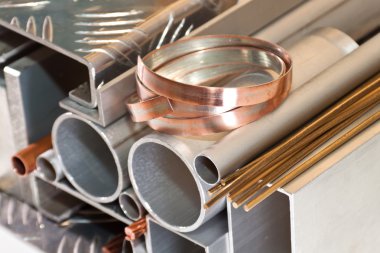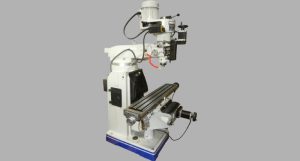We find ourselves surrounded by a craft forged over thousands of years, a craft that stands at the heart of metalworking today. But what is sand casting, really? Using nothing more than sand and molten metal, how do we bring to life those everyday or truly unique metal creations? Whether we’re just beginning our journey in metalworking or we’re experienced hands, diving into the secrets of sand casting lets us step into a world where art meets engineering in ways both ancient and magical.
Non-ferrous metals are metals that contain little or no iron (Fe). They generally resist rust, are corrosion-resistant, lightweight, and have good electrical conductivity. Unlike ferrous metals like carbon steel and stainless steel, they are work well in applications where lightness, conductivity, corrosion resistance, or specific aesthetics are needed. The primary include aluminum, copper, lead, zinc, nickel, and titanium.
So, what exactly are non-ferrous metals? What unique properties and applications do they have? Today, let’s explore the world of those in depth.

What Are Non-Ferrous Metals?
In simple terms, they are metals and alloys that do not contain iron. Unlike ferrous metals such as steel, non-ferrous metals are prized for their excellent conductivity, corrosion resistance, and lightweight properties, making them indispensable in various fields. From electrical wires and batteries to airplane components, they are vital in modern manufacturing, offering diverse properties and uses. Common non-ferrous metals include aluminum, copper, zinc, magnesium, titanium, and precious metals, each with distinct advantages and applications.
Types and Characteristics of Non-Ferrous Metals
- They can be categorized into base metals, light metals, heavy metals, and precious metals. Each type has unique physical and chemical properties, suited to specific applications.
Aluminum: Known for its low density, corrosion resistance, and easy machinability, aluminum finds widespread use in everything from household foil to airplane bodies. - Copper: With excellent electrical and thermal conductivity, copper is widely used in the electrical and electronics industries. Copper pipes, wires, and alloyed parts play key roles in construction and engineering.
- Zinc: Zinc is essential for galvanizing steel products. Galvanizing improves steel’s corrosion resistance and longevity, making it widely used in construction and automotive manufacturing.
- Magnesium: As the lightest structural metal on Earth, magnesium is frequently used where high strength and light weight are needed, such as in automotive and aerospace components.
- Titanium: Titanium’s high strength, light weight, and corrosion resistance make it ideal for aerospace, medical devices, and sports equipment.
- Precious Metals (Gold, Silver, Platinum): These metals are prized for their rarity and exceptional conductivity and are commonly used in electronics, jewelry, and high-end industrial applications.
Applications of Non-Ferrous Metals
They are crucial due to their diverse applications. Whether in industrial manufacturing or advanced technology, they are play an irreplaceable role.
- Electrical and Electronics Industry: Thanks to their outstanding conductivity, metals like copper and silver are essential for wires, cables, and electronic components.
- Construction and Structural Materials: Aluminum and zinc’s corrosion resistance make them popular in building materials such as window frames, roofing, and curtain walls.
- Transportation: Lightweight metals like aluminum and magnesium are essential in automotive and aerospace industries, reducing vehicle weight and improving fuel efficiency.
- Medical Field: Titanium’s biocompatibility makes it suitable for artificial joints, implants, and surgical tools.
- Luxury Goods and Jewelry: Gold, silver, and platinum are popular in jewelry and luxury items due to their beauty and rarity.
Advantages of Non-Ferrous Metals
Compared to traditional ferrous metals, non-ferrous metals offer several unique benefits:
- Corrosion Resistance: Most of them have high corrosion resistance, making them suitable for humid or corrosive environments.
- Excellent Conductivity and Thermal Properties: Metals like copper and silver possess excellent conductivity, making them ideal for use in the electronics and electrical sectors.
- Lightweight: Many of them are lighter than iron, such as aluminum and magnesium, giving them a competitive edge in lightweight applications like automotive and aerospace.
- Gold and platinum exhibit a brilliant appearance, giving them strong aesthetic appeal and making them ideal for jewelry and art.
Challenges and Environmental Issues
Despite their advantages, they are face some challenges during mining, processing, and recycling, particularly regarding environmental and resource issues.
- High Energy Consumption: Extracting and refining non-ferrous metals often requires significant energy, increasing carbon emissions.
- Limited Resource Reserves: Some precious metals are rare, and their high extraction costs make them expensive.
- Recycling Challenges: Recycling non-ferrous metals is essential for sustainability but often involves complex processes and advanced technology.
Future Trends
As technology advances and environmental awareness grows, the production and use of them are moving toward sustainability. Key future trends in the non-ferrous metals industry include:
Efficient Recycling and Circular Use: Improving recycling processes will help reduce dependence on natural resources.
New Material Development: In high-tech fields, continuous research on non-ferrous metal alloys and composites will provide lighter, stronger, and more durable materials for aerospace, medical, and electronics industries.
Smart Manufacturing Technology: Automation and intelligent technologies will enhance non-ferrous metal production efficiency and reduce environmental impact.
Conclusion
Non-ferrous metals are all around us, from household items to high-tech products. With diverse properties and applications, they form a vital part of modern society. Understanding these metals’
unique characteristics and applications helps us better appreciate the material science behind modern industry. Whether you’re a metalworking enthusiast or someone eager to explore the world of metals, non-ferrous metals open a window to materials science and manufacturing.











